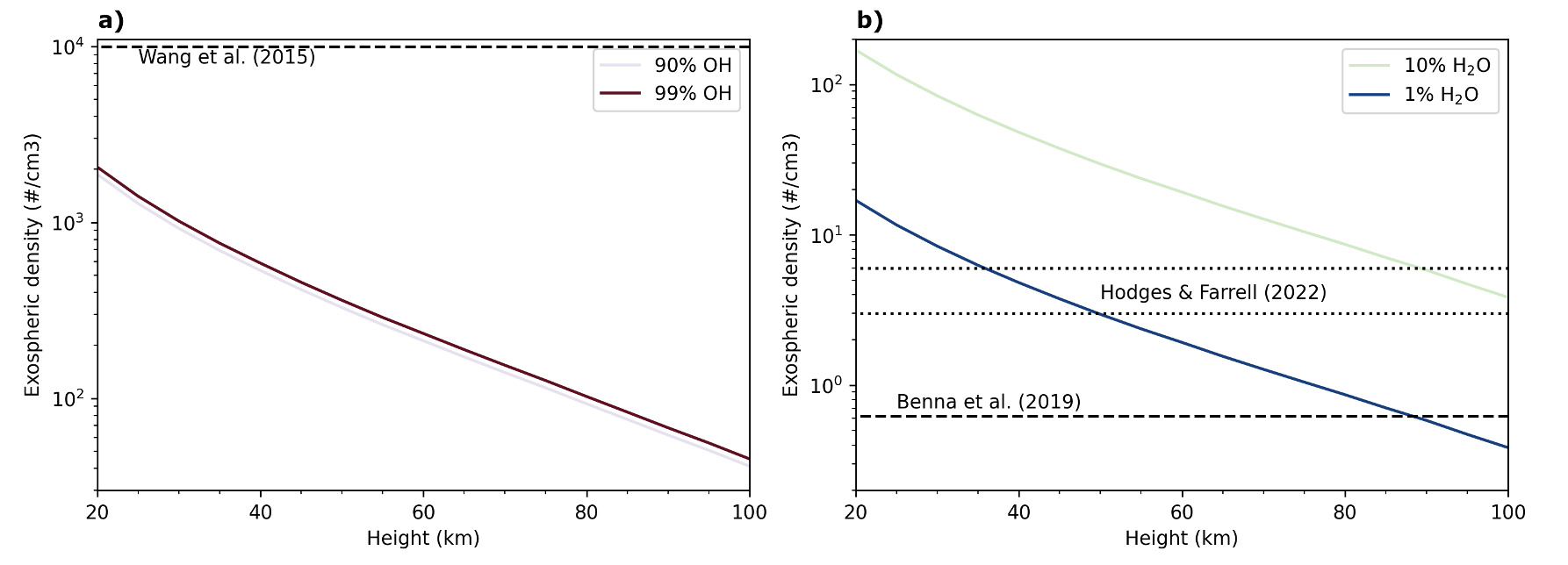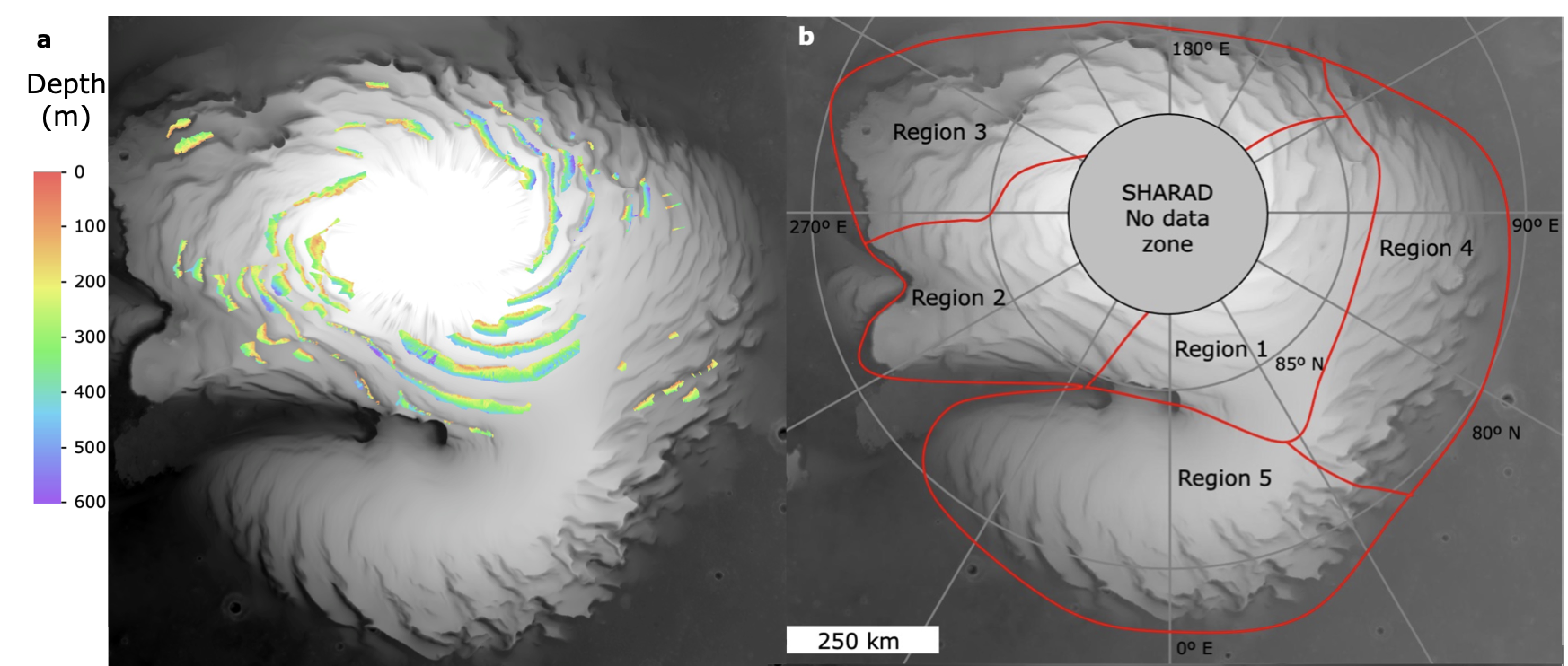Research
Check out my google scholar or search for me on NASA/ADS for the most up-to-date links to papers and abstracts. Please feel to email me if you cannot access the articles through your institution.
On-going work
Modeling Ice Mass balance using MCMC and Trough Migration Paths
with Dr. Ali Bramson, Purdue University
Mars’ northern pole features a kilometers-thick ice cap of mostly pure water ice, and most of this polar cap is made up of the North Polar Layered Deposits (NPLD). The NPLD is a series of continous layers of ice and dust. The variation in dust content allows for observation of these layers through ground penetrating radar, like SHARAD aboard MRO. These layers provide a record of variations in Mars’ climate due to orbital forcing. In the upper ~500 meters of the NPLD are sloping unconformities, which have been interpreted as bounding surfaces due to the migration of the spiral troughs poleward over time. We are using a MCMC and phenomenological model to back out Mars’ ice accumulation and loss rates through time based on the mapped trough migration paths.
Ballistic Transport of OH and H2O on lunar diurnal timescales
with Dr. Ali Bramson, Purdue University
The mechanism which results in the observed diurnal varaibility of the 3 micron absorption feature is unknown. One potential mechanism that has been proposed is ballistic migration, however it has been suggested that measurements of the lunar exosphere disagree with this hypothesis. We explore if both the diurnal trends observed on the surface and the exopsheric density can be explained through ballistic transport. Shown below is the result of our OH and H2O models, revealing that ballistic transport produces similar exospheric densities to those observed.

In review
Mars’ North Polar Spiral Trough Migration Paths as revealed through 3D Radar Mapping
with Dr. Ali Bramson, Purdue University
We have extensively mapped radar features known as “Trough Migration paths” throughout the recent SHARAD 3D dataset (link), characterizing the morphologies of these features which act as a tracer for Mars’ volatile mass balance over the past few million years. Shown below is our map of TMPs (color is depth from above surface) and the regions categorized by surface and subsurface radar features.

Past Projects
Exploring the variability of the 3 micron hydration feature across the southern hemisphere of the Moon
With Dr. Jessica Sunshine and Dr. Lori Feaga, University of Maryland, College Park
Published in JGR: Planets (2022)
The 3µm OH/H2O hydration feature on the Moon has been observed using various instruments. The 2009 Deep Impact spacecraft flyby present a unique view of the southern hemisphere, allowing for exploration of the feature spatially and temporally using near infrared spectroscopy. The HRI-IR spectrometer aboard Deep Impact includes out to 4.85 micrometers, which allowed for removal of the thermal component of the spectra through modeling of a scatter and thermal spectra component. This allows us to investigate the entire 3 micron absorption feature and the variability in strength and shape across the southern hemisphere.
As there were three fly-by observations, we also have a small region of repeat coverage spanning half of a lunar day. This allows for investigation into diurnal variation of the same physical region.

Survey of low speed meteor showers
with Dr. Althea Moorhead, Marshall Space Flight Center, Meteoroid Enviornment Office
Proper shower assossiation of meteors observed expands our ability to predict and forecast future shower fluxes. Slow meteors often are difficult to associate with showers due to their geometry upon collision with Earth’s atmosphere, so we attempted to associate meteors to showers from their helocentric radiant, rather than the geocentric radiant they are observed in. We found that the use of heliocentric radiant associates more medium to slow speed meteors to known showers than the geocentric radiant. Using a density based spatial clustering algorithm with noise (DBSCAN), we organized metoers into showers given speed, direction (radiant), and time of occurance. Shown below is a bar chart containing the number of members associated to each shower given our two approachs, heliocentric and geocentric. Note that the x-axis is logarithmic.
